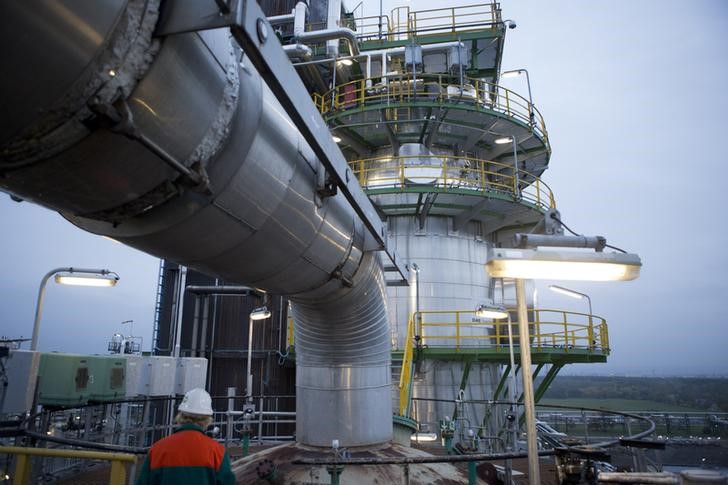Crude Oil Lower; Set for First Quarterly Loss in Two Years
2022.09.30 09:49
[ad_1]

© Reuters.
By Peter Nurse
Investing.com — Oil prices fell Friday, on course for the first quarterly drop in two years as demand fears on the back of slowing global growth outweighed the possibility of an output cut next week.
By 09:10 ET (13:10 GMT), futures traded 1.2% lower at $80.27 a barrel, while the contract fell 1.2% to $86.12.
The crude market could post gains this week, underpinned by the falling back from its recent 20-year highs, but are still on course for quarterly losses of over 20% for the first time since 2020.
The prime driver over the last three months has been the move of several major central banks, led by the U.S. Federal Reserve, to tighten interest rates aggressively to try and curb high inflation, raising concerns about a recessionary hit to demand.
These falling prices have put the spotlight firmly on next week’s meeting of the Organization of the Petroleum Exporting Countries and allies, a group known as OPEC+, with expectation growing that the leading members will authorize another output cut after last month’s modest reduction.
The top oil producers are considering lowering their output target by between 500,000 and 1 million barrels per day to support the market, Reuters reported Friday, citing sources.
The group agreed to lower their output target by 100,000 barrels a day at its September meeting, the first cut since 2020, but this provided very little support.
“The question that seems to vex the market is that oil prices, while volatile, are still near $90 (Brent). So why cut at all?” said analysts at Bank of America, in a note.
“In our view, the answer is relatively simple: steep backwardation that remains a source of volatility with each contract roll and a 3-year futures curve that has dropped $10 in recent months.”
Elsewhere, the European Union countries agreed on Friday to impose emergency levies on energy firms’ windfall profits, and began talks on the potential of a bloc-wide gas price cap.
This came a day after , the Eurozone’s largest economy, said it will borrow up to 200 billion euros ($198 billion) to cushion the impact of energy prices on its economy this winter.
The rig count and the CFTC’s round off the week later in the session, as usual.
[ad_2]
Source link








